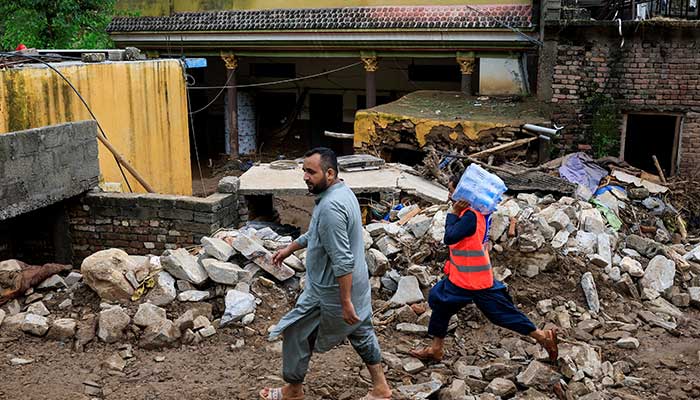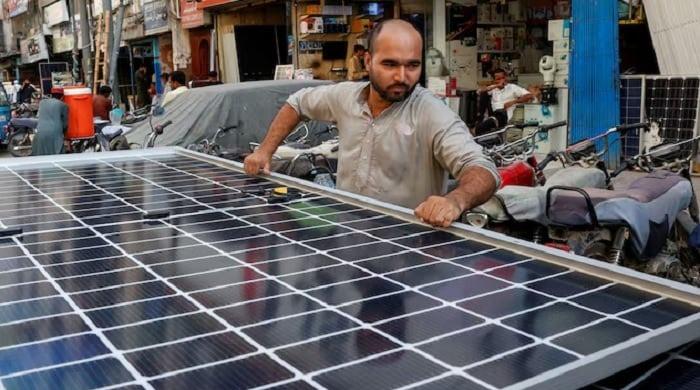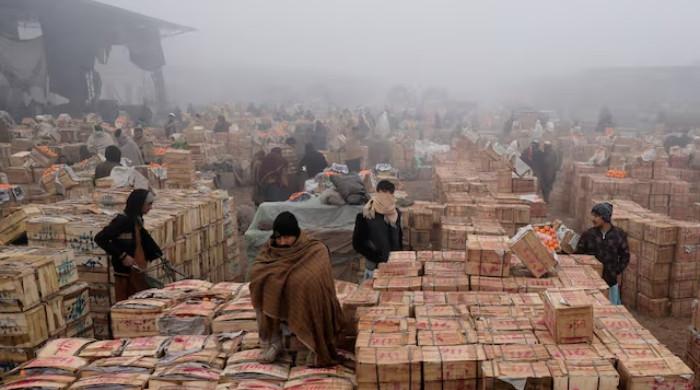Deluge of devastation
Govts should establish early warning systems and leverage weather forecasts to alert people to avoid path of floodwaters
August 21, 2025

Pakistan is going through one of its strongest and deadliest monsoons ever. According to the Pakistan Meteorological Office and the National Disaster Management Authority (NDMA), the current monsoon season and the heavy rain accompanying it will continue till the middle of September.
As of August 17, since the monsoons began at the end of June, over 650 people have lost their lives, and hundreds more are missing. There has been extensive damage to roads, infrastructure and private property, the extent of which will only become known in the coming days when the monsoon ends and the floodwaters subside.
Khyber Pakhtunkhwa has been particularly badly hit, with one district alone, Buner, losing over 200 precious lives, and hundreds more missing. In this district, an entire village has been wiped out and the valley floor, which used to have dozens of homes built on it, is strewn with massive boulders and rocks bigger than cars, all brought down from the surrounding mountains by the floodwaters.
At the time this column was being written, the monsoon had finally reached Karachi with full intensity. The city has been experiencing frequent spells of very heavy rain, and it is forecast to run through to the coming weekend.
Karachi, unfortunately, is no stranger to urban flooding — though the rainfall that the city experienced on August 19 was unlike anything seen in recent years. As of Tuesday evening, 145 millimetres of rain had fallen in the space of a few hours.
Being the country's largest metropolitan area, and also among the most haphazardly planned, heavy rain always presents a challenge for its residents.
Given its size and the nature of construction on it, with many stormwater drains leading to the sea or to nullahs that empty into the sea, and with thousands of encroachments built along these nullahs/drains or on them, it is no wonder that heavy rain causes urban flooding in the city, especially in its low-lying areas.
In addition to this, the drainage system and gutters are often found to be choked, despite being cleaned before the monsoon by the various municipal bodies that control multiple parts of Karachi.
The fact that many of us openly throw litter and plastic bags on the streets makes it doubly worse, since this plastic gets stuck in the roadside gutters and chokes them.
This is a cycle that Karachi experiences every time there is heavy rain and, good or bad, most of its residents have become accustomed to it.
Even the best of well-planned cities is vulnerable to flooding, especially when almost double the average monthly rainfall for the month falls in a matter of a few hours. What is key is how quickly the water drains away, and in many parts of the city, it becomes free of standing water a few hours after the rain ends.
The worst-hit areas of the country are KP and Gilgit Baltistan, and to a lesser extent, Azad Jammu and Kashmir. The death and devastation caused by the monsoons in these regions indicate several things.
Yes, a lot of the flooding is caused by climate change, but not all of it can be explained by this single factor. Pakistani cities and towns are notorious for their ill-planning and haphazard growth when it comes to building new homes, offices, shops, hotels, etc.
This is what’s causing a lot of the property damage in places like Swat, where hotels and residential homes have been built encroaching upon the natural path of streams and rivers.
Then consider the case of Buner, which was the worst-hit district in the entire country, and is not generally known for flash floods. However, it has been reported that in recent years, the rate of deforestation was alarmingly high and it is likely to have been a major factor behind the flood, which ended up transporting boulders as large as vehicles and even small homes down the mountains and wiped out an entire village.
The deforestation is caused by the timber mafia, which usually has the backing of the local police as well as the elected representative of the area. The provincial government of the PTI did say that it had planted saplings in Buner district as well but these will develop and grow into trees only after some years.
Currently, the lack of tree cover means that heavy rain erodes the hillsides and accompanying soil and rocks more readily than if there were a reasonable tree cover. The only possible protection against such flooding in the future is to try to avoid building homes in areas that could be in the path of floodwaters. Although humans cannot change the route of the floodwaters, they can plan their buildings to stay out of the drainage paths.
At the very least, provincial and local governments should establish early warning systems, utilising loudspeakers at mosques and leveraging weather forecasts to alert people to avoid the path of floodwaters. For their part, citizens, especially domestic tourists, need to heed weather reports and travel advisories more seriously since many a death can be prevented by people only travelling when the weather clears and the floods recede.
Disclaimer: The viewpoints expressed in this piece are the writer's own and don't necessarily reflect Geo.tv's editorial policy.
The writer is a journalist based in Karachi. He posts @omar_quraishi and can be reached at: [email protected]
Originally published in The News









